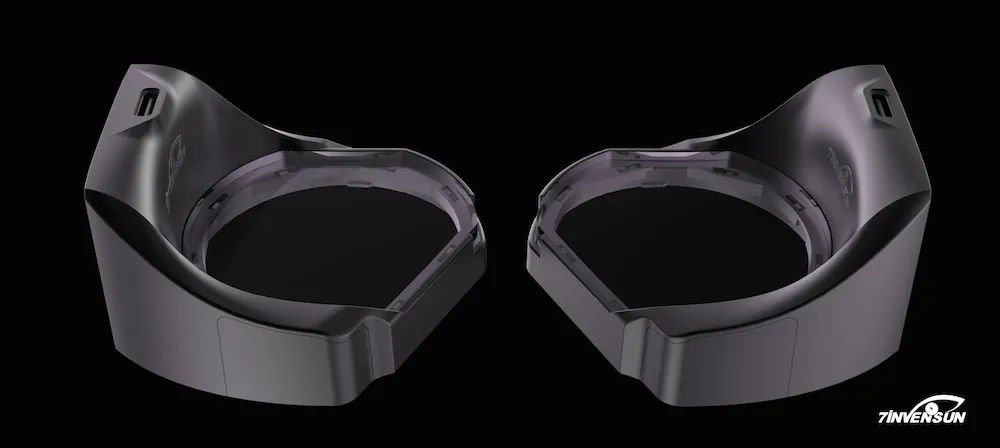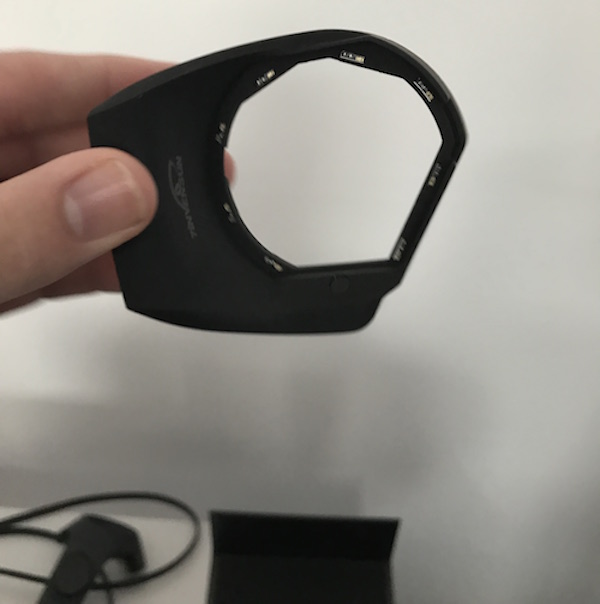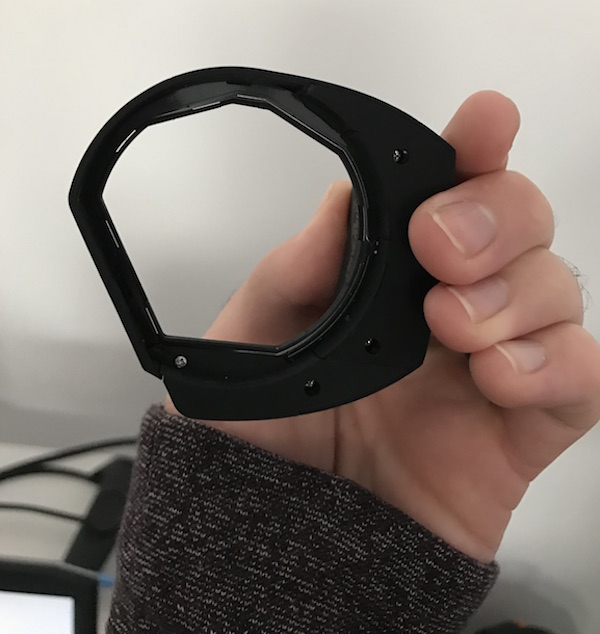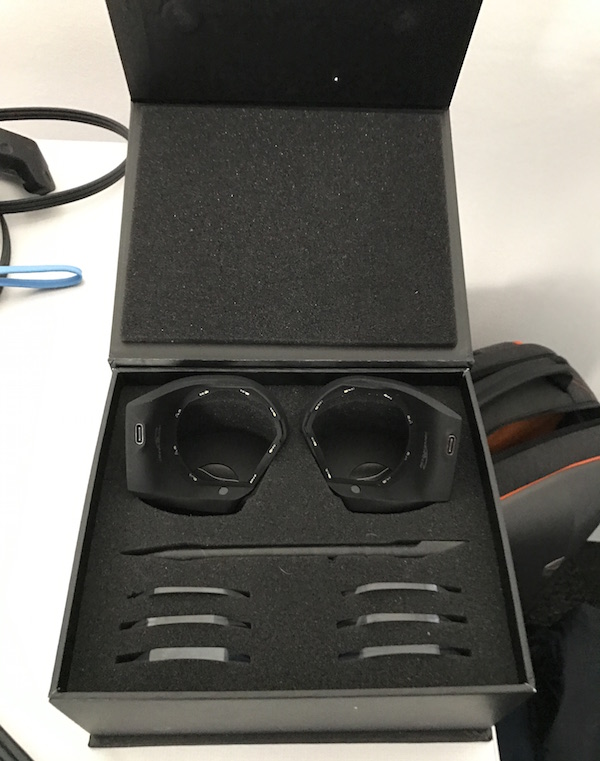Eye tracking is one feature that could could benefit the performance and affordability of high-end virtual reality headsets. The HTC Vive should become the first mainstream headset to put that theory to the test.
A Chinese startup known as 7invensun (pronounced seven-in-ven-sun) is announcing it will be releasing a new eye tracking module for the Vive next month. The module is called the aGlass and it will be available for “limited pre-order sales” next month, according to HTC. The company is referring to this first roll-out as a developer kit, but pre-orders are open to anyone.
According to HTC, the system will cost about $220 USD and will release first in China next month before rolling out towards Q3 in the west.
Unlike other eye tracking solutions that require hardware to be installed at the manufacturer level, the 7invensun devices are modular in nature. The thin plastic overlays can be placed manually inside the Vive headset by the average VR user, according to the company. The eye trackers are designed to be wired directly to the headset over USB. Two separate USB chords are connected to each of the aGlass devices. The two chords are then joined by a USB combiner and fed into the Vive’s single port.
The aGlass consists of two separate trackers built specifically to fit alongside the lenses of the Vive. Each tracker has a halo of IR lights combined with sensors that can track the movements of each of your eyes and eyelids. It is said to support customized lenses depending on the specific vision concerns of the individual customer.
This type of tech can have a variety of use cases but the most immediate is foveated rendering.
Foveated rendering is a process that combines eye tracking and software to adjust the way a VR experience is rendered in real time. With foveated rendering, the PC running your Vive only has to render the greatest detail in the small area on which your eyes are directly focused. This dramatically lowers the cost of the hardware required to successfully show a convincing VR experience. According to 7invensun spokespeople, this tech could allow Vive to run on older generation graphics hardware.
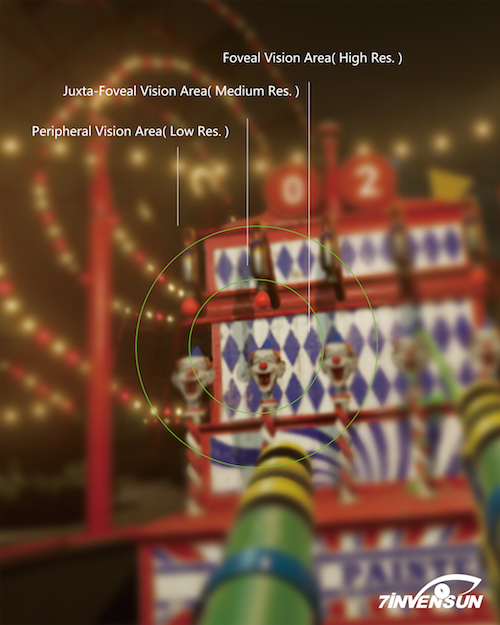 Currently, VR demands graphics cards and CPUs that are among the most powerful that the various manufacturers can provide. With foveated rendering, however, users can lower the workload demanded by their Vives and run VR on older, cheaper hardware from NVIDIA, AMD, Intel, etc.
Currently, VR demands graphics cards and CPUs that are among the most powerful that the various manufacturers can provide. With foveated rendering, however, users can lower the workload demanded by their Vives and run VR on older, cheaper hardware from NVIDIA, AMD, Intel, etc.
The aGlass comes with custom software allowing you to manually apply foveated rendering to any HTC Vive experience and the amount of the effect being applied. In a demonstration, we saw the device running with NVIDIA’s VR Funhouse experience with a performance jump from 45 frames-per-second to 90 with the foveated rendering applied. This functionality will only be available with NVIDIA graphics cards at first, according to the company.
According to a spokesperson for Vive, the release of aGlass ties into the team’s stated goal for 2017 which is to “expand the ecosystem” for the headset by providing cutting edge peripherals like this, the TPCast wireless VR system and the Vive Tracker. To that end, Vive is officially referring to the aGlass system as an “upgrade kit” for the Vive.
7invensun is a member of the Vive X accelerator’s second class. This is Vive’s in-house startup incubator that previously gave rise to TPCast and other VR-specific startups.
The aGlass will only work with the Vive upon release. HTC emphasizes that they are not making that a requirement for 7invensun, which has full freedom to develop this hardware for other headsets in the future.
–
Update: after publishing, HTC confirmed the price and release schedule for the aGlass. That information has now been added to the story.

